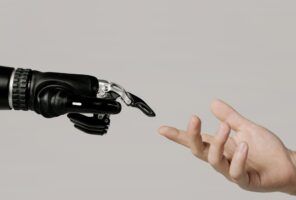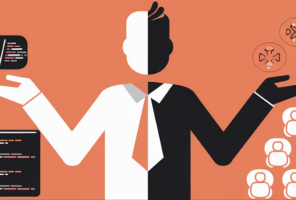Future-Ready, Without Starting Over: AI’s Role in Legacy Modernization
Modernizing doesn’t always mean starting from scratch. Artificial Intelligence (AI) offers organizations the opportunity to enhance their legacy systems, without disrupting the operations they rely on. Rather than replacing entire applications or workflows, AI can be integrated into existing environments to add intelligence, automation, and value.
Adding AI to the Tools You Already Use
Many enterprise software platforms are already being transformed by AI. Tools like Google Gemini and Microsoft 365 Copilot are now embedded in workplace collaboration suites. These handle email, messaging, video conferencing, and document management in smarter ways.
These AI-powered assistants can help teams:
Summarize and compose emails
Transcribe and extract highlights from meetings
Search and organize files across systems
Generate reports, presentations, marketing content — even videos
In development environments, platforms like GitHub Copilot and JetBrains AI support engineers with intelligent code completion, test generation, and source‑control suggestions, accelerating productivity and reducing context‑switching.
Meanwhile, AI chatbots can be integrated into existing websites to manage customer support, guide users through frequent processes, or offer personalized content and recommendations based on behavioral data.
The key? These tools work within the systems teams already use — lowering the learning curve and accelerating ROI.
Modernizing Legacy Applications with AI
Legacy systems often serve as the backbone of enterprise operations. But aging architecture can limit agility, security, and maintainability. Generative AI and machine‑learning offer new ways to revitalize these systems, without a full rebuild.
Some approaches SPR recommends include:
Rewriting legacy code into modern, secure, maintainable programming languages to reduce technical debt and extend system life
Creating modern APIs or facades that wrap around older applications, adding updated authentication, encryption, or data‑formatting standards while preserving the core logic underneath
Automating documentation and test creation to improve development velocity and reduce the risk of updates
This kind of targeted modernization helps organizations reduce risk, avoid downtime, and gradually move toward scalable, future-ready architectures.
Optimizing Workflows Through Intelligent Automation
When workflows are built on APIs or processable data, AI can automate a wide range of tasks, freeing up time and reducing manual overhead. Examples include:
Repetitive processes: fetching overdue invoices, sending follow-ups, monitoring SLAs
Rule-based operations: compliance validation, threat detection, audit logging
Data workflows: migration, cleansing, transformation, and enrichment
Predictive analytics: equipment maintenance forecasting, demand prediction, customer churn modeling
Risk and scoring models: fraud detection, credit scoring, risk profiling
Localization: real-time language translation and content adaptation
Operational tasks: logistics optimization, delivery scheduling, route planning
Content governance: moderation of user-generated content, policy enforcement
Travel and booking coordination: automating itineraries or approvals
AI is especially effective in scenarios where teams are working with large, fragmented datasets, delivering faster insights and surfacing trends that are hard to spot with manual analysis.
Real‑World Example: Generative AI in Action
For example, SPR partnered with a benefits advocate company to apply generative AI to a legacy, manual claims‑processing workflow that handled complex disability benefit applications. The traditional process was slow, error‑prone, and bias‑prone: documents had to be manually assembled based on federal regulations and detailed health histories, then reviewed and submitted. This was laborious work that could take days per claim.
SPR rebuilt the workflow using modern cloud infrastructure (AWS + Azure OpenAI), enabling automated generation of fully compliant claim documents in minutes rather than days or weeks. The new system also removed templated “fingerprints,” improving the likelihood of claim approval. As a result, the client could produce thousands of documents per month at a fraction of the cost, demonstrating how AI can deliver real business value by modernizing legacy processes, reducing risk, and improving outcomes.
This case underscores the core message of this article: AI integration does not require wholesale system replacement, it can power meaningful transformation on top of existing infrastructure.
Looking Ahead: Practical AI for Real Systems
As AI becomes more accessible through cloud‑based services, organizations can take a pragmatic approach to modernization. Rather than rebuilding everything, the smarter strategy is often to extend the value of existing systems, enhancing them with AI capabilities that are scalable, cost-effective, and aligned with business goals.
At SPR, we partner with clients to integrate AI thoughtfully, balancing modernization with stability, and innovation with risk. Whether it's optimizing workflows, revitalizing legacy applications, or improving user experiences, AI can play a powerful role in evolving enterprise systems without disrupting what already works.



